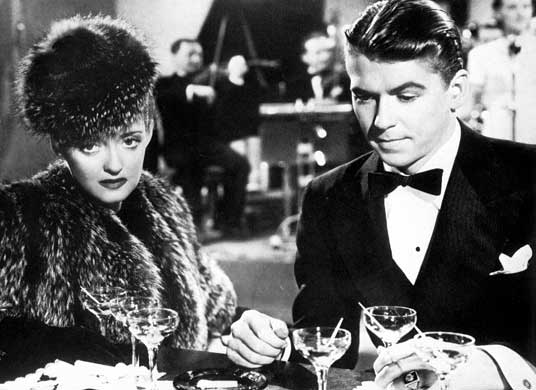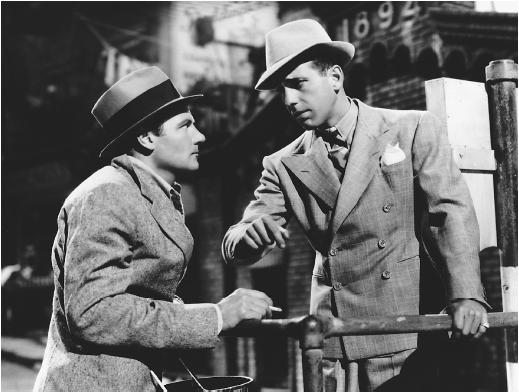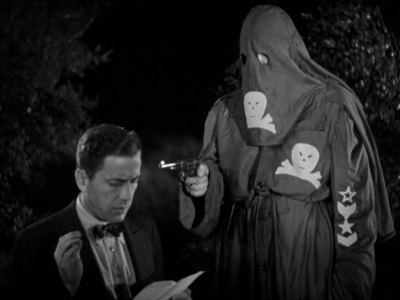
I’ve made many references to High Sierra (1941) in my posts. Much to my surprise, I have not written about the movie completely. Today will be the day that it is looked at, as it was the biggest break of Humphrey Bogart’s career on so many levels.
The Maltese Falcon (1941) is often thought of as the “big break” in Bogart’s career. That is true in the fact that it established him as the antihero in
Roy Earle is basically Sam Spade. Spade happens to be fighting on the side of the law, although that side in white contains shadows. Earle is a gangster, but he isn’t all bad. He has his own personal code, something found in every great Bogart character. He isn’t the perfect man, and he admits it, but he makes sure everything he does is in step with his code.
Besides giving credit to Bogart for making these characters malleable, John Huston needs to be admired for the job he did in writing them. Especially in the case of Roy Earle. Huston, still a screenwriter at this time, worked on High Sierra. As mentioned previously, George Raft was originally going to get the role, much to the chagrin of Huston. When Raft didn’t want it, Huston got to work with Bogart. Huston tailored the part for Bogie. His expectations were met and exceeded by Bogie’s performance. This is one of the reasons why Huston lobbied to have Bogie return as Sam Spade when he was given the reigns of The Maltese Falcon.
The story of High Sierra involves the newly paroled Roy Earle leaving the Midwest for the Sierra Nevada mountains in
Of course, the job is the least of Earle’s worries. His new partners have brought along a girl, played by Ida Lupino. Earle believes the job should be one done by men only and dames only get in the way. It is up to Lupino to show Earle that she is tough enough for the job. In the end, she seems to be the only tough one around. In order to counter the tough girl Lupino, there is a girl named Velma who strikes Earle’s eye. She happens to have a cleft foot, but Earle enjoys her company and loves her family, who also happen to be from the
The operation goes well and Thelma is hardly thankful to
In the end, the job doesn’t go over well. Lupino and Bogie have to go on the lam. Bogie’s boss dies and no one is able to give him the money he is promised. He is chased into the Sierra’s where he is fatally shot. It is a fitting tribute to the gangster from the studio that specialized in that picture.
More importantly than the tribute to








